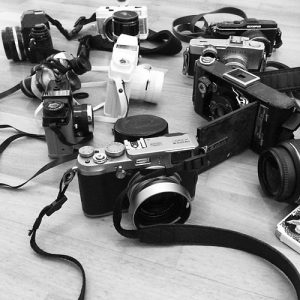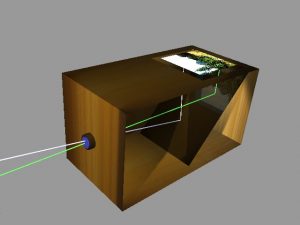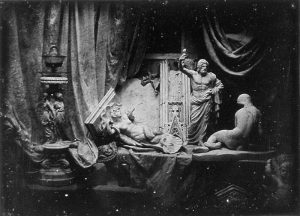Photography has come a long way in its relatively short period. From the 5th century Camera Oscura to the Contemporary DLSR (Digital Single-Lens Reflex Camera).

image source: https://search.creativecommons.org/photos/50876541-a0c9-4425-a7b0-2ea30308b193
Camera Obscura
Even if the concept of photography has been around since about the 5th century B.C., it wasn’t until an Iraqi scientist developed something called the camera obscura in the 11th century that the art was born.

image source: https://en.wikipedia.org/wiki/History_of_photography#/media/File:Camera_obscura_box.jpg
The first camera obscura used a pinhole in a tent to project an image from outside the tent into the darkened area. However, the camera simply projected images onto another surface upside down, so that they could be traced to create accurate drawings.
It wasn’t until the 17th century that the camera obscura became small enough to be portable. Basic lenses to focus the light were also introduced around this time.
Nièpce and Daguerre
Photography, as we know it today, began when Nicéphore Nièpce began experimenting with other light-sensitive substances and invented a process called heliography. In 1826, he took the first photograph, which depicted a view from a window of his hometown in Burgundy, captured on a pewter plate covered with bitumen diluted in lavender oil. The exposure time was several days.

image source: https://en.wikipedia.org/wiki/History_of_photography#/media/File:Boulevard_du_Temple_by_Daguerre.jpg
A few years later, Nièpce enters into a partnership with Louis Daguerre, and together they improved the heliographic process, using a more photosensitive resin and improving post-exposure treatment.

image source:https://en.wikipedia.org/wiki/History_of_photography#/media/File:Dorothy_Catherine_Draper_crop.jpg
After Nièpce died in 1833, Daguerre developed a technique in which a silver-coated copper plate smoked with iodine vapor formed silver iodide when exposed to light in the camera.
He took a big forward when he discovered that a “latent” image obtained from a short exposure could be further developed and made visible by exposing it to mercury fumes: in this way exposure times could be reduced to a few minutes.

image source: https://commons.wikimedia.org/wiki/File:Daguerre_kynzvart.jpg
Info source: https://www.britannica.com/technology/photography
